Propaganda for profit targets the Baltic states on YouTube
Fringe YouTube channels monetize pro-Kremlin narratives
Propaganda for profit targets the Baltic states on YouTube

Fringe YouTube channels monetize pro-Kremlin narratives about the Baltic states

Seven of the 10 most viewed Russian-language YouTube channels that post news stories about the Baltic states are from fringe outlets or individual YouTubers rather than established Kremlin-supported media, according to a DFRLab analysis conducted using social media listening tool BuzzSumo. These channels use content from Kremlin media and repeat the same hostile narratives pushed by the Russian state, but they appear to be doing so for profit rather than ideological reasons.
These anti-Baltic narratives can be seen as part of the ongoing effort by pro-Kremlin actors to convince Russian-speaking audiences that countries in the region that embrace a pro-European course end up in decline. And while conventional wisdom suggests that Kremlin-aligned media dominate the publishing of hostile narratives about the Baltic states, this new evidence suggests that these types of stories are by no means exclusive to well-known actors with ties to the Kremlin.
Fringe outlets that propagated anti-Baltic narratives monetized their efforts by promoting ad placement, donation opportunities, and even branded merchandise. In addition, they cross-promoted via each other’s channels as a means of manipulating the YouTube algorithm to amplify their videos to a broader audience.
Fringe outlets dominate
The DFRLab used the social media monitoring tool BuzzSumo to look for YouTube videos that mentioned “the Baltic states,” “Estonia,” “Latvia,” or “Lithuania,” in their varying Russian-language noun forms over an 18-month period, from January 2019 through June 2020. The research analyzed videos tagged by authors under the categories “Politics,” “Society,” and “Military,” but did not include other categories such as “Travel,” “Entertainment,” “Sports,” and “Lifestyle,” to avoid stories that were not political.
Below is the list of the top 10 channels that garnered the most views per video on average about the Baltic states.

Seven of the 10 channels listed above can be characterized as fringe news outlets or individual YouTubers. Among the others are STV BY (CTVBY) YouTube channel, which is a mainstream pro-Kremlin TV channel in Belarus, as well as the anti-Kremlin channels Navalny LIVE (Навальный LIVE), which is associated with Russian opposition leader Alexey Navalny, and Krim.Realii (Крым. Реалии), a Radio Free Europe/Radio Liberty channel about Crimea.
The DFRLab also investigated which channels were the most active in publishing videos about the Baltic states in Russian. Two Kremlin-owned outlets (Sputnik and Rossiya 24) and one pro-Kremlin outlet (First Baltic) appeared on the list of the top 10 most active content producers.
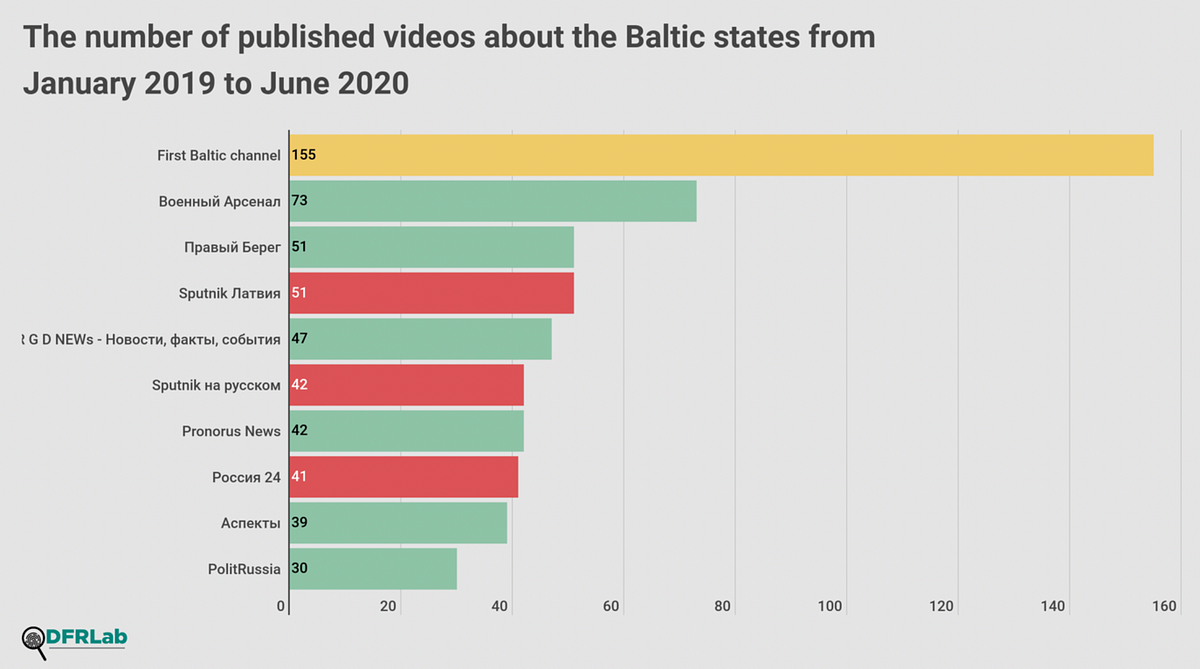
Hostile content
The most popular fringe channels did not cover the Baltic states exclusively. Most of the channels described themselves in their “About” section as generic news channels covering Russia and abroad. Many channels also covered Ukraine, Belarus, the European Union and its member states. The content of the videos was predominantly hostile toward Russia’s Western neighbors.
For example, the most viewed video in the set, which garnered over 3 million views, was published by the STV Belarus channel and showed Aleksander Lukashenko, the President of Belarus, explaining how Belarus is tackling COVID-19. It also published a verbal attack by Lukashenko on Lithuanian President Gitanas Nausėda titled “Lukashenko was harsh in response to Lithuanian President: You better deal with your own virus, you have many issues!”
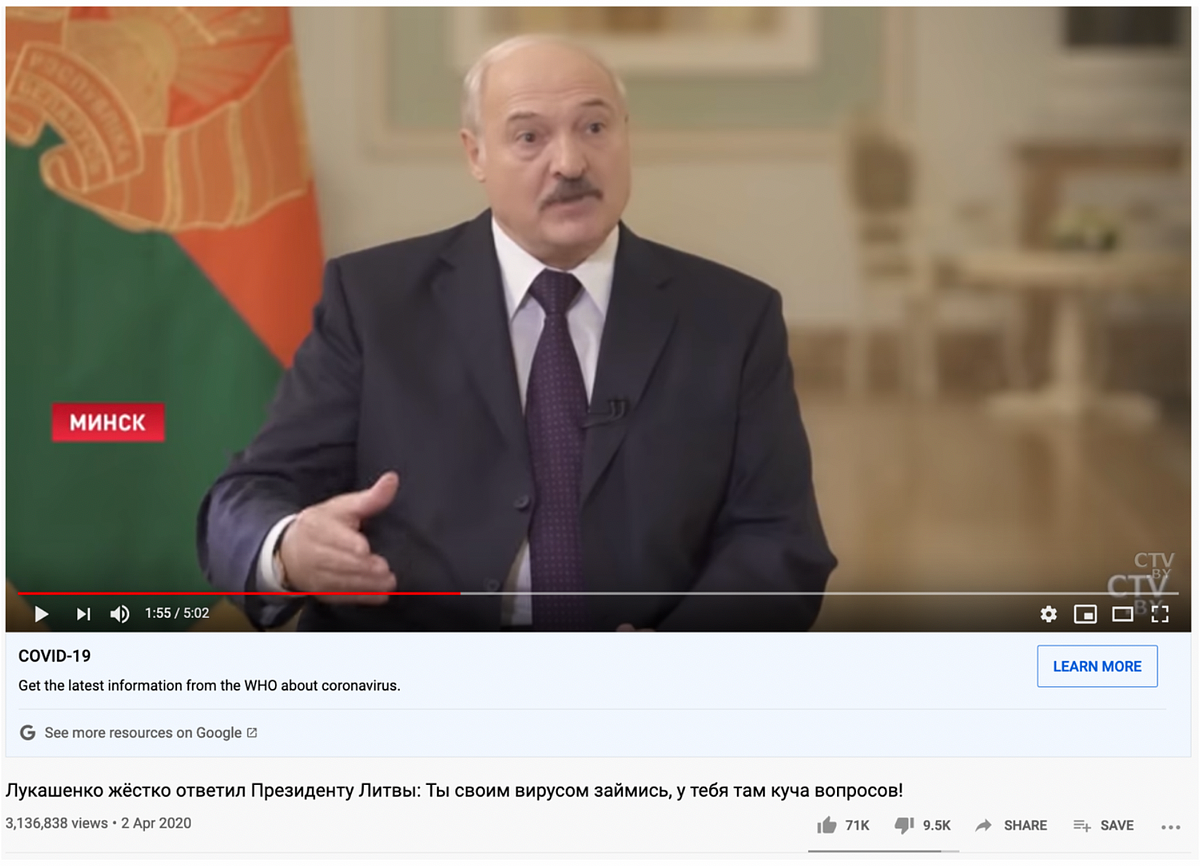
Many videos in the set discussed real news events that concerned the Baltic states and Russia. For example, the fringe channel “Aspekty” published a video mocking Estonian President Kersti Kaljulaid’s meeting with Russian President Vladimir Putin in April 2019. In the video, which included photos from the meeting between Putin and Kaljulaid, the narrator read a blog entry by Sergey Filatov, a pro-Kremlin commentator. The blog entry mocked a statement made by Kaljulaid and later reported by the Kremlin-owned news outlet RIA Novosti. According to the publication, Kaljulaid said that after her meeting with Putin, Estonia could be on the same level as other NATO member states. The commentator implied that Estonia was a small and irrelevant country that had now become “braver.”
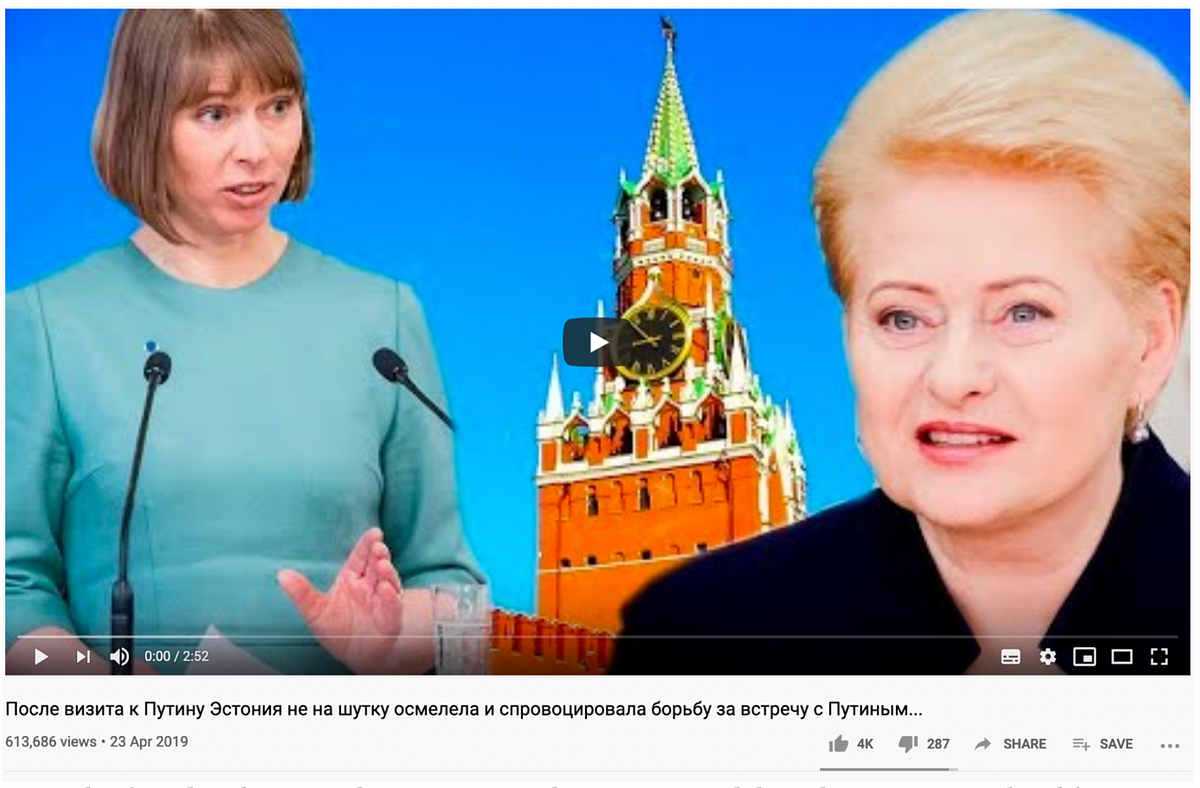
Many other videos suggested that the pro-European and anti-Russian positions held by the Baltic states hurt their economies. For example, the fringe channel “Voennyi Arsenal” published a video suggesting that Latvia was forced to lay off 1,500 railway workers because Russia had stopped exporting its cargo through Latvia. While Latvia had laid off the workers, the Latvian government never clarified the rationale for doing so beyond highlighting a need to stabilize the company and reduce operating costs. The video description mentioned that the source of the news story was RuBaltic.ru, a pro-Kremlin outlet that focuses on the Baltic states.
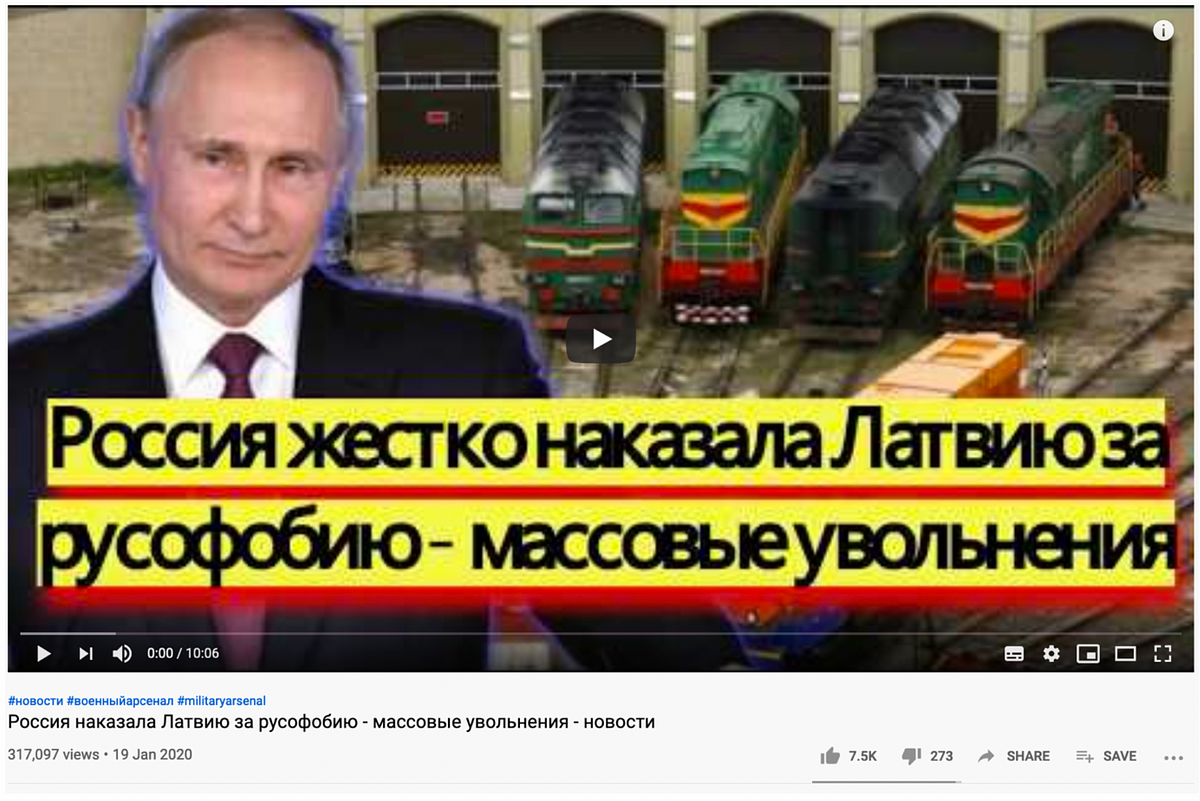
The fringe YouTube channels analyzed for this article do not appear to be affiliated with pro-Kremlin or Kremlin-funded outlets. Rather, they repackage content from such outlets in order to make their videos, thus amplifying Kremlin narratives to a broader audience.
Monetizing propaganda
Profit appeared to be an important incentive driving the fringe channels to publish hostile content targeting the Baltic states. Four out of the seven most viewed fringe channels on YouTube contained links for donations or an email address for business inquires.
For instance, one of the 10 most-viewed channels was “Rogandar NEWs — News, facts, events,” which was linked to two other channels with similar names and email addresses for business inquires. It offered businesses space in its videos to advertise, information on how to donate money (to three different bank accounts), and details on how to buy a generic, unbranded t-shirt.
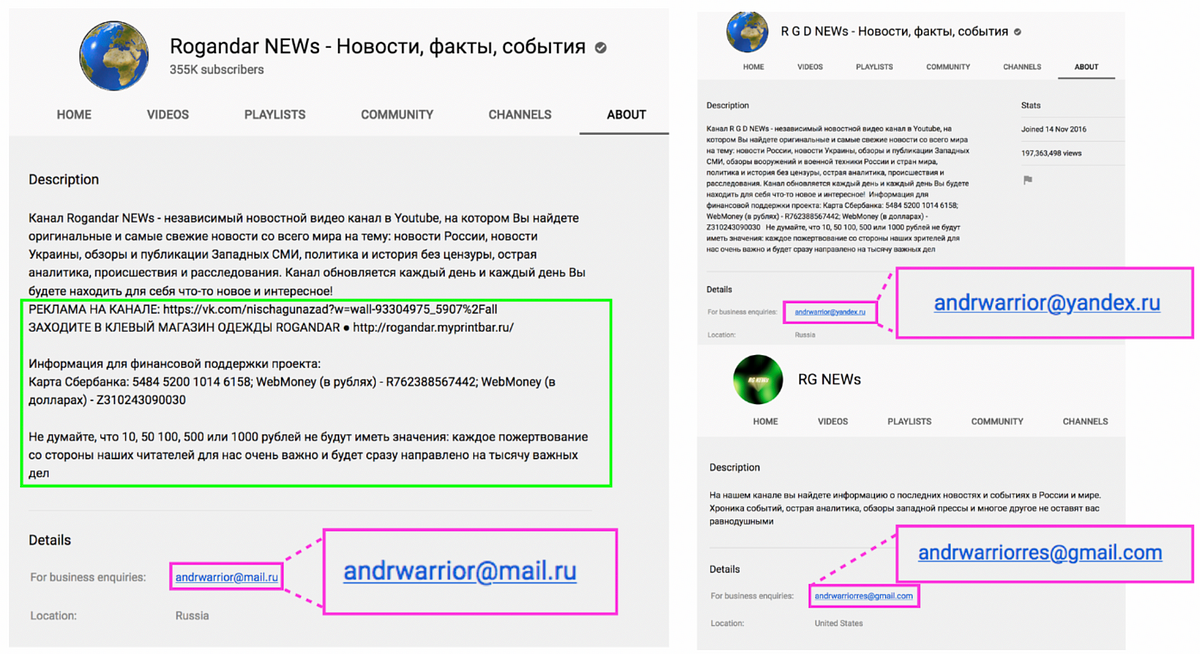
Cross-promotion as “featured channels” was another strategy that the fringe channels used to reach viewers. The channel Voennyi Arsenal (Военный Арсенал), for example, featured another channel, Novostnoy Efir (Новостной Эфир), which returned the favor by cross-promoting Voennyi Arsenal. When a channel lists another channel as “featured,” it increases the likelihood that YouTube’s algorithm will suggest the listed channel to viewers of the original channel.

The Rogandar NEWs channel also ran a larger scale cross-promotion network, as can be seen in the following screenshot.
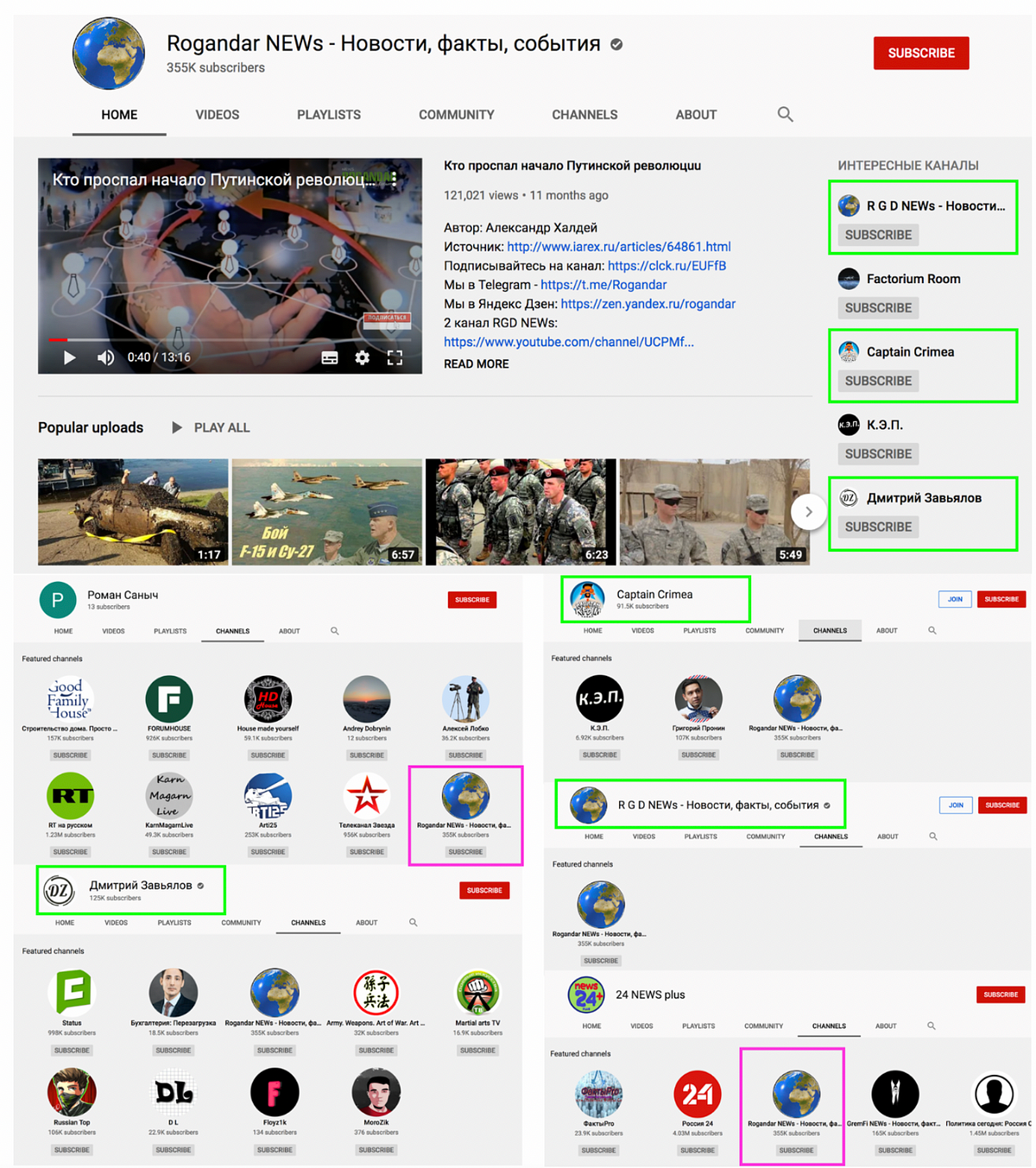
Disinformation and propaganda that employ political narratives are not always politically motivated; sometimes, the primary motivation is financial. While established Kremlin-owned outlets publish anti-Baltic narratives regularly as a means of furthering the Kremlin’s geopolitical interests, this analysis revealed a constellation of fringe YouTube channels that push similar stories, often compiled directly from Kremlin sources, but likely for their own financial profit.
Nika Aleksejeva is a Research Associate with the Digital Forensic Research Lab (@DFRLab) and is based in Latvia.
Follow along on Twitter for more in-depth analysis from our #DigitalSherlocks.

